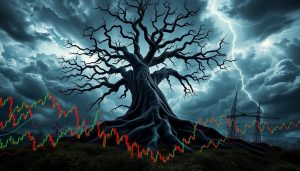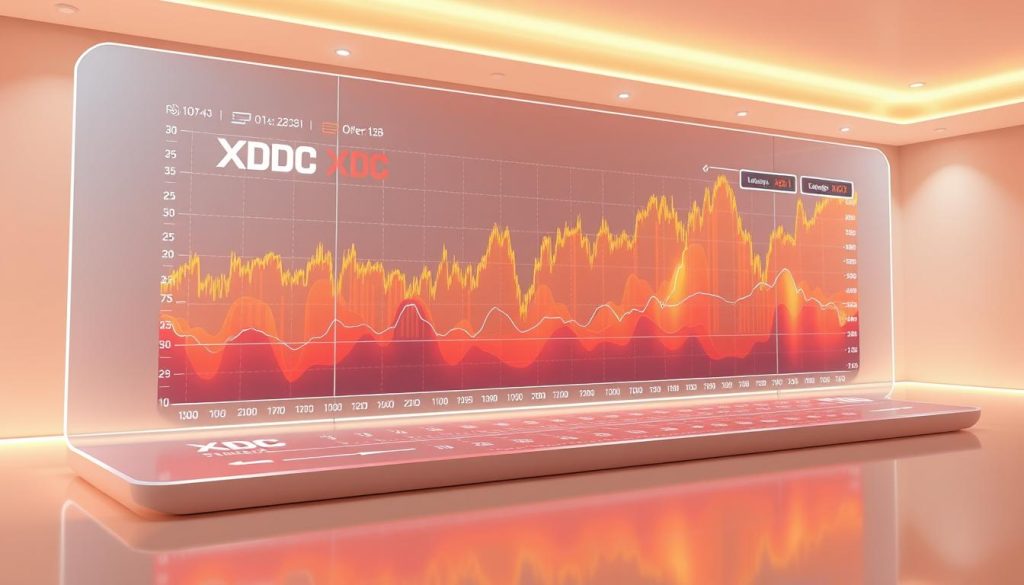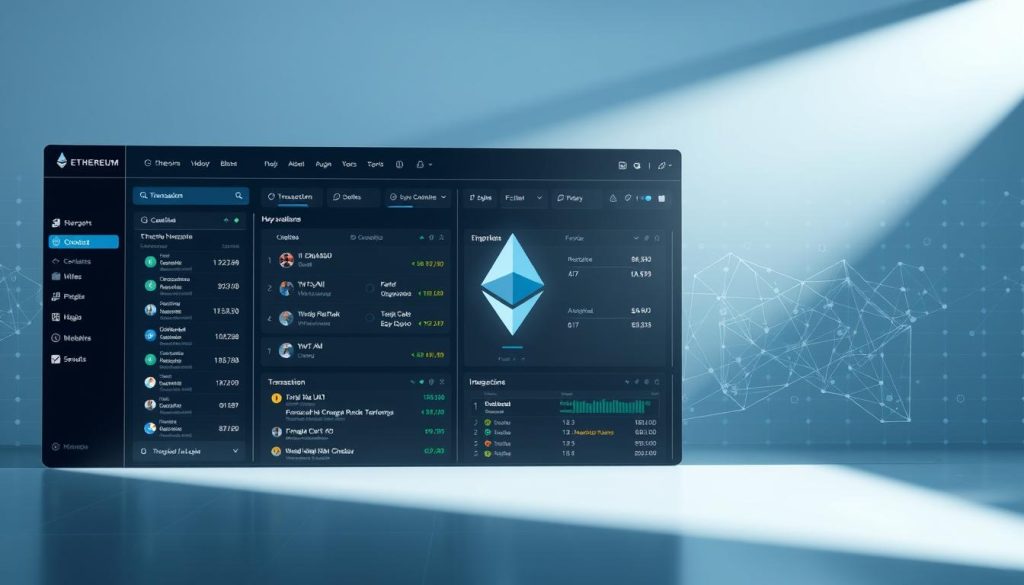It’s quite surprising, but over 60% of people trading crypto rely on charts to make decisions. Yet, most of them don’t fully grasp the basics. This is why I’ve decided to write a beginner’s guide to reading crypto charts.
Charts are helpful tools but they don’t predict the future. In the beginning of this guide, I’ll set clear expectations. You’ll learn how to read crypto charts and get tips to avoid common mistakes that I’ve encountered.
Understanding charts involves recognizing patterns, understanding statistics, and managing risks. You’ll need to be familiar with platforms like TradingView, Coinbase Pro, and Binance. It’s also important to keep an eye on big events like policy changes or geopolitical tensions that can affect prices.
This guide will later include graphs, a bit of statistics, and some predictions based on history. I’ll also recommend tools and sources. Remember, all charts and forecasts have risks and, while this is educational, always do your own research before investing.
Key Takeaways
- Charts are useful tools, not guaranteed predictors.
- This guide explains the basics of reading crypto charts with step-by-step examples.
- Practice on platforms like TradingView, Coinbase Pro, and Binance.
- Watch macro events—policy and geopolitics can override patterns.
- Risk management and statistical thinking are as important as pattern recognition.
Understanding the Basics of Crypto Charts
I began my journey with charts on TradingView and Binance. Through a crypto chart, we see a lot of market info in one picture. It captures price movements over time and sometimes volume. This way, we understand buyer and seller actions through numbers and timestamps.
What is a Crypto Chart?
A crypto chart visually represents price over time. It shows the opening, highest, lowest, and closing prices, often including volume. I prefer using candlestick charts on TradingView. They show the price details clearly, which helps in analyzing short and long-term trends.
Teaching beginners about crypto charts, I emphasize the story each candle tells. It shows the clash between buyers and sellers in a single bar. Looking at multiple bars reveals the overall trend.
Types of Crypto Charts
There are several chart types I look at daily. A line chart offers a straightforward view of price history. It’s good for a fast check.
Bar charts, similar to candlesticks, display the opening, high, low, and close prices differently. Candlestick charts are preferred for their ability to show market feelings per time period, making it simpler to spot patterns.
Depth charts provide a look at the current order book. I examine one to understand liquidity positions before making a big trade. Knowing these chart types is crucial for beginners because each offers distinct insights.
Key Components of Charts
The foundations of a chart are its axes and timeframes. Timeframes can range from a minute to a month, affecting the chart’s clarity. A minute chart appears hectic, while a daily chart shows a clearer trend.
The essentials of a chart include the OHLC (Open, High, Low, Close) and volume bars. Volume helps confirm market movements. I always assess volume to verify any price changes or potential trend reversals.
Charts also have overlays and indicator panels for better insights. I often use moving averages, like the 50- and 200-day lines, on daily charts. They quickly give me a sense of the trend direction.
My advice: start with daily candle charts, use volume to confirm trends, and compare data across platforms. Since platforms like TradingView, Binance, and CoinMarketCap can differ, I cross-check them for accuracy.
Key Metrics for Analyzing Charts
I began analyzing charts by looking into simple factors: what influenced prices and how these changes became lasting. I’ll share three key metrics I use daily when reading charts for beginners, especially in crypto. These methods are easy to use for Bitcoin, Ethereum, and altcoins, helping you make sense of the charts without getting overwhelmed.
Candlestick Patterns
Candlesticks show us the battle between buyers and sellers in a clear way. By understanding a few patterns, you can spot changes in market momentum early on. For instance, a doji indicates uncertainty after a price move; a hammer suggests a possible reversal of a downtrend due to increased buying.
Patterns become more meaningful with confirmation. If a morning star forms on Bitcoin’s chart and its trading volume increases, it’s a stronger signal. For Ethereum, evening stars often predict declines when they align with specific signals like divergence on the RSI. This approach helps beginners understand and use chart indicators: spot the pattern, consider the context, and look for volume or trend confirmation.
Support and Resistance Levels
Support and resistance are about zones where market activity intensifies, not exact points. I map out these areas by drawing lines across swing highs and lows and note significant numbers, like $20,000 for Bitcoin, as key levels. Seeing price struggle or bounce off these zones tells us about resistance or support.
But remember, major news or market events can quickly change these levels. Things like new rules, big economic changes, or sudden moves in exchanges can turn support into resistance in no time. If you’re new to chart reading, remember these zones are flexible and watch how prices move around them.
Volume Indicators
Volume gives us a clue about the strength of a price move. I use different ways to check volume – looking at volume bars, tracking On-Balance Volume (OBV), and analyzing Volume Profile to see the main activity areas. A big move accompanied by high volume is usually more reliable than one with scant volume.
It’s important to know that many false breakouts happen on weak volume. This observation has shaped a key rule for me: always look for volume to back up a breakout before trusting it. This advice is especially valuable for beginners learning to read crypto charts and grasp their patterns.
| Metric | What to Watch | Practical Takeaway |
|---|---|---|
| Candlestick Patterns | Doji, Hammer, Engulfing, Morning/Evening Star; location relative to trend | Use patterns as early signals; confirm with trend and volume before acting |
| Support & Resistance | Recent swing highs/lows, round numbers, horizontal zones | Treat levels as zones; watch for repeated tests or quick breaks after news |
| Volume Indicators | Raw volume bars, OBV trend, Volume Profile density areas | Require rising volume to validate moves; low-volume breakouts often fail |
Introduction to Technical Analysis
My first chart had messy candles and loud volume spikes. Nothing clicked at first. I later grasped that technical analysis examines market behavior through price and volume. This helps predict future trends. It’s about playing the odds, understanding that history often echoes itself, rather than directly repeats.
What is Technical Analysis?
Technical analysis employs patterns, indicators, and price structures to predict outcomes. It’s similar to predicting the weather—uncertain but useful. In the beginning, I concentrated on straightforward signals. I avoided the allure of complex metrics.
This method is like a toolkit for understanding market momentum and psychology. Combining price action with context was key to navigating crypto charts. This strategy made the overwhelming information more manageable for beginners.
Popular Indicators in Crypto
I count on a handful of reliable indicators, including Moving Averages and RSI. Others are MACD, Bollinger Bands, and Fibonacci retracements. Each comes with a rule of thumb I remember.
- Moving Averages (SMA, EMA) — EMA adjusts quickly to price movements. Use it for short trends, and SMA for longer trends.
- Relative Strength Index (RSI) — An RSI above 70 signals overbought conditions. Below 30 means possibly oversold.
- MACD — A MACD shift hints at momentum changes. Keep an eye on MACD versus price changes.
- Bollinger Bands — Volatility causes bands to widen. Prices near the edge indicate strong moves or potential reversal.
- Fibonacci retracements — Use these for identifying possible retreat areas in trends.
Indicators are always a step behind. They can mislead in unpredictable markets. Speculative surges in areas like AI distort readings. The same happens with crypto when excitement outweighs the basics. So, be cautious with indicators during hype.
If you’re new to reading crypto charts, start with the basics. Limit yourself to a few indicators. Look for confirmation across various timeframes. To improve, examine your past trades. See which indicators were accurate and which weren’t.
How to Interpret Price Trends
I teach how to read crypto charts, starting with identifying trends. Knowing these patterns is vital. They range from simple to complex, needing additional context.
I focus on macro and micro trends to avoid losses. A rising bull trend shows increasing highs and lows. In contrast, a bear trend shows decreasing highs and lows. I rely on the 200-day moving average to guide my Bitcoin or Ether trades.
My routine is checking daily and weekly charts before trading. This boosts my confidence if they agree. I hold off if they don’t. This approach has prevented losses during turbulent times.
Trend lines are useful for trading. They’re drawn connecting at least two specific points. If a line touches three points, it’s even stronger. Using channels helps identify price ranges and goals.
A breakout becomes significant if there’s a volume increase. Look for a confirmation bar at close. However, be wary of false signals. Patience and waiting for a second confirmation can help reduce mistakes.
Sudden news can change market mood quickly. Things like new tariffs or big regulatory changes can ruin trend lines right away. So, it’s essential to keep up with major news while learning chart basics.
If you’re new, practice by drawing on past charts. Then, see how your analysis matches up with actual price action. It’s a good way to get better without risking money.
For newcomers, begin with simple steps. Focus on the trend direction, how moving averages align, and volume. These form a process you can improve with time.
Historical Data and Predictions
I use historical price records to create trading rules. Testing a straightforward concept like buying at a 50-day moving average cross reveals pattern repeatability and failure points. Importance is placed on sample size and avoiding survivorship bias. On paper, many strategies look promising but don’t perform well in real markets. It’s vital to remember that past success doesn’t ensure future outcomes in trading.
I’ll show you how to effectively validate trading rules and make reliable forecasts. My examples are easy to understand, even for beginners learning to read crypto charts.
Step-by-step backtest
- Collect daily price and volume data spanning three market cycles.
- Clearly define how you’ll enter and exit trades, including stop-loss and how much to trade.
- Test your trading rule on historical data, then again on new, unseen data.
- Include assets that are no longer listed and those with low activity to check for bias.
- Review your strategy’s effectiveness by examining win rate, average profits, setbacks, and number of trades.
When possible, I match chart signals with the basics of a sector or company. Take Consensus Cloud Solutions, for example. It showed strong earnings momentum, affecting stock prices positively. Mixing these insights can boost the accuracy of predictions for assets, including those with on-chain data.
Statistical and model overview
- Use moving averages to track trends.
- Employ ARIMA models for predicting short-term average swings.
- Apply mean-reversion strategies with set limits.
- Run Monte Carlo simulations to see how strategies might perform under different conditions.
- Try simple machine learning, making sure it’s carefully tested on new data to prevent mistakes.
Begginers should aim for easy-to-follow rules and forecasts that offer a range of outcomes. It’s more practical to say there’s a “60% chance of prices going up over the next month” than to guarantee it. Avoid making absolute predictions.
To help beginners with crypto charts, I stress the importance of simplicity: limit indicators, note every trade, and always use new data for testing. This approach helps avoid overconfidence, making predictions more reliable.
Essential Tools for Charting
I use a combination of desktop and mobile apps for analyzing charts, verifying signals, and monitoring trades. Choosing the right tools saves time and helps avoid mistakes. I always make sure to verify data from exchanges before making decisions.
Best Charting Platforms
TradingView is top on my list for its scripting features, custom tools, and a big community sharing ideas. When I need a consolidated view from exchanges like Binance, Coinbase Pro, and Kraken, Coinigy is my choice. Using Binance and Coinbase Pro’s own charts helps me place orders fast when I’m ready.
Remember, data can differ between exchanges affecting prices, and thus support and resistance levels. For testing strategies, I use tools that can replay historical market movements precisely.
Mobile Apps for Crypto Analysis
For updates and quick checks, I use mobile apps from Binance, Coinbase, and Kraken. CoinStats and Blockfolio are my picks for tracking my portfolio with their easy-to-view snapshots and alerts. My strategy: in-depth analysis on the desktop, quick checkups and notifications on my phone.
Mobile apps are useful for notifications but not for detailed analysis or drawing. I see them as helpful additions, not the main tool for analysis.
Practical tool list:
- Charting: TradingView, Coinigy, exchange-native charts
- Backtesting: platforms with replay and strategy testers
- On-chain explorers: Glassnode for chain metrics
- News aggregators: CryptoPanic for event monitoring
- Alert systems: exchange push alerts and TradingView alerts
It’s crucial to remember that these platforms provide data and tools, not specific advice. Begin with easy chart reading tips if you’re new to crypto. Get familiar with one platform before trying others.
Frequently Asked Questions
The first time I opened TradingView, I was overwhelmed. Begin with the basics. Choose a charting platform and learn about OHLC and candlestick shapes. Start practicing with daily charts. Then, add volume and a simple indicator like RSI or a 50 EMA. Do paper trades for weeks and take screenshots of your setups. Keep a record of your trades and thoughts in a spreadsheet. This method is a great way to learn reading crypto charts as a beginner.
How Do I Start Reading Crypto Charts?
To start, follow a simple plan. Use a platform like TradingView. Focus on understanding candlesticks, OHLC bars, and basic concepts of support and resistance. Use daily charts to get a sense of the trend direction. Incorporate volume to validate your observations. Choose one indicator, either RSI or a 50 EMA, and stick with it. Practice through paper trades and keep a log of your findings. With time, this practice lays the groundwork for analyzing crypto charts confidently.
What Tools Do Experts Use?
Professional traders use a blend of chart tools and additional data. They often use TradingView for chart visuals and indicators. Bloomberg provides them with institutional context. For on-chain metrics, Glassnode or Coin Metrics are common choices. I use Python and pandas for creating custom backtests to evaluate my theories. Experts combine technical signals with major news and fundamentals to strengthen their decisions.
- TradingView — charting and community scripts
- Bloomberg Terminal — institutional price and macro data
- Glassnode and Coin Metrics — on-chain supply and flow metrics
- Python + pandas — bespoke backtests and data cleaning
Can I Trust Predictions Based on Charts?
Remember, charts offer probabilities, not certainties. I see signals as ideas to test. Use defined risk limits and stop-losses. It’s also smart to keep an eye on sudden news that could affect the market. For instance, news about MicroStrategy buying more Bitcoin can quickly change market mood; read more about it here.
As you learn to interpret crypto charts, combine careful testing with a knowledge of their limits. Start with small trades. When you find a consistent strategy, then you can trust your analysis more. Charts are helpful, but they’re not a guarantee.
Strategies for Making Informed Decisions
I once made trades without thinking it through. A big loss due to high leverage during a market spike changed that. The experience showed me the importance of following rules. Now, I use simple systems with risk control and clear rules for when to enter and leave a trade.
Risk Management in Trading
Risk management should be clear and easy to measure. I never risk more than 1–2% of my account on a single trade. I also use stop-loss orders for every trade. This way, I don’t put too much into one investment and spread my risk between different ones like Bitcoin and Ethereum.
Recording every trade in a journal is crucial. It helps me keep track of what works and what doesn’t. By reviewing my trades, I can see if my strategy is winning or needs changes.
Entry and Exit Strategies
Effective entry and exit strategies are based on rules you can check. One method I use involves waiting for a drop to a moving average when volume goes up. I look for times when prices break above a ceiling with more trading volume, too. It’s essential to test these rules with old data before using real money.
Always have an exit plan. Decide on a stop loss and target profit before you start. Or, use a trailing stop to safeguard profits. Expect both wins and losses. Evaluating the win rate and risk-to-reward ratio can help predict outcomes.
If you’re new to reading crypto charts, start with the basics. Learn to spot support and resistance levels, watch for volume changes, and try out entry and exit plans without real money. This practice can help you recognize patterns without stress.
Here’s a simple checklist I use to stay focused:
- Position size = 1–2% of equity.
- Stop-loss set before entry.
- Entry trigger validated by volume.
- Predefined profit target or trailing stop.
- Journal every trade and review monthly.
Case Studies and Real-World Examples
I’ve gathered case studies to show you real chart work in action. You’ll see how to read patterns, understand on-chain signals, and react to news. It’s like a beginner’s course in crypto chart analysis, showing you what to do and what to avoid.
Success Stories from Experienced Traders
A trader made gains during a bull market by analyzing different time frames. He confirmed daily trends and entered trades on an hourly basis, never risking more than 1% of his funds. Another trader found success with volume profiles and RSI signals, setting clear profit targets.
Corporate news can also drive crypto prices. For example, when Consensus Cloud Solutions announced strong earnings, similar tokens rose. This shows the value of mixing chart analysis with news on companies and the economy.
Lessons Learned from Market Failures
Traders often stumble by missing certain signs, like false moves on low volume. They might focus too much on one indicator or overlook big economic news. The lessons are clear: check the volume, use various time frames, and always be prepared for losses. Use stop orders and plan your exits carefully.
Here’s how to get better: Create a watchlist, set price alerts, try a demo account, and study credible analyses. These insights, from both wins and mistakes, offer a hands-on guide to mastering crypto charts.










 Bitcoin
Bitcoin  Ethereum
Ethereum  Tether
Tether  XRP
XRP  USDC
USDC  TRON
TRON  Lido Staked Ether
Lido Staked Ether  Dogecoin
Dogecoin  Cardano
Cardano